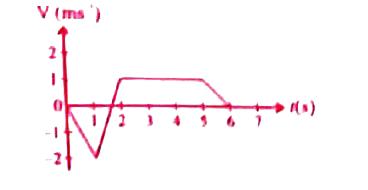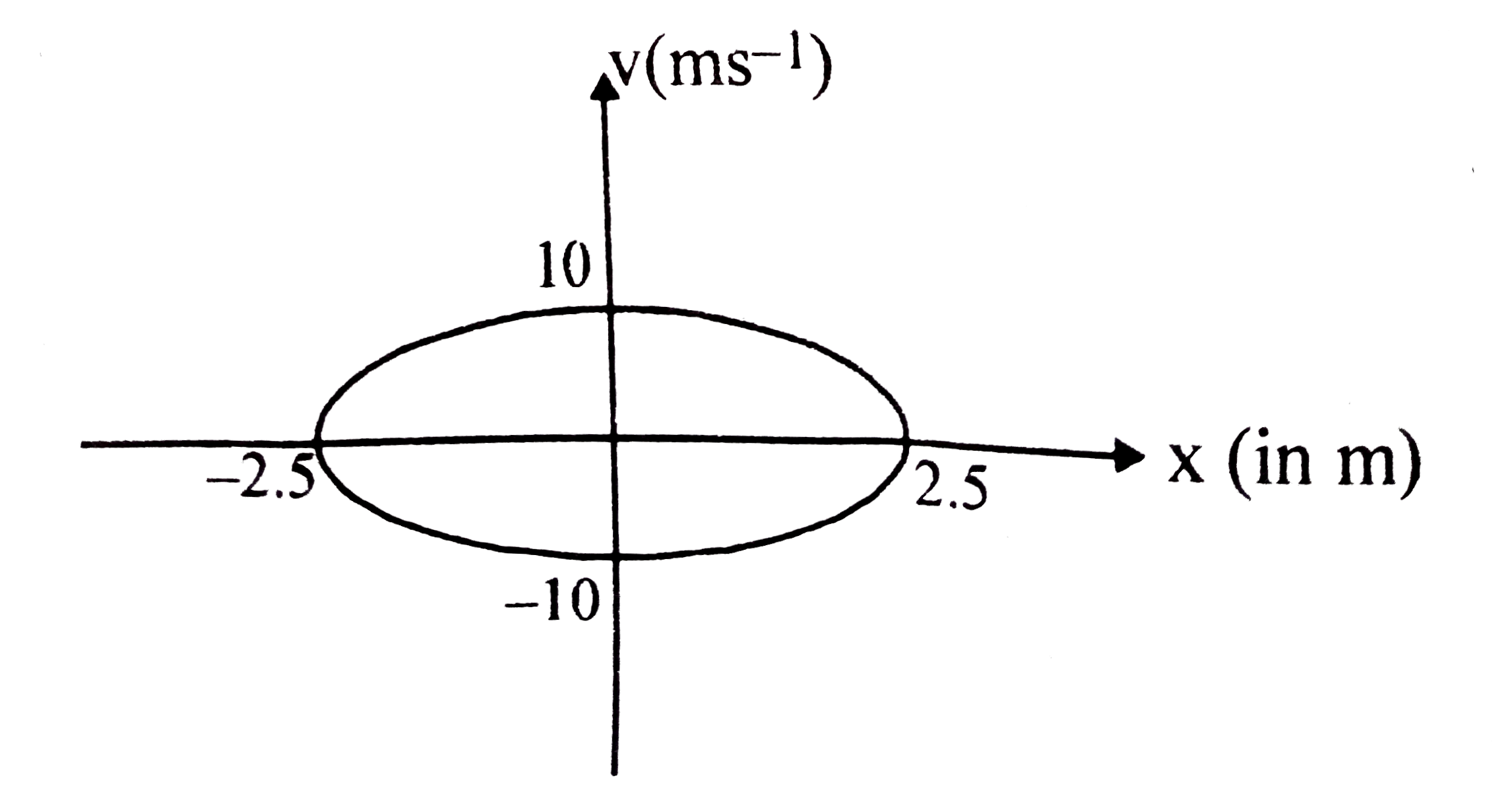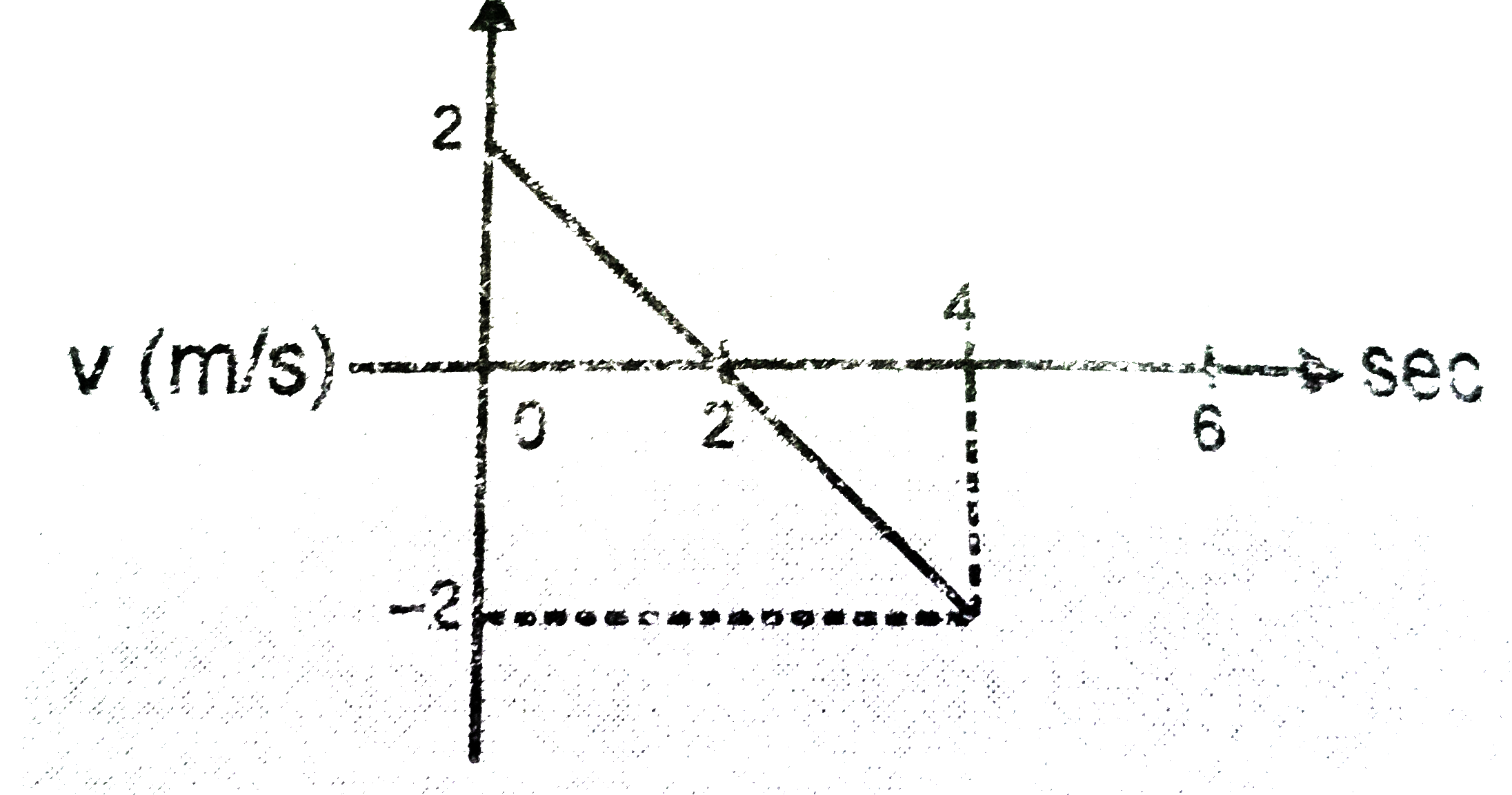The following velocity-time graph represents a particle moving in the positive x-direction . Analyse its motion from 0 to 7s . Calculate the displacement covered and distance travelled by the particle from 0 to 2s
 Solution in Tamil
Solution in Tamil
Given : t = 2s
Formula :
Area of triangle
= displacement
In the graph 0 to 2s is divided into 2 triangle ,
Case I : t = 0 to 1 . 5 s
Area
Case II : t = 1 . 5 to 2s
Area
= 0 . 25
Distance = 1.5 + 0 . 25 = 1.75 m
Displacement = 0 . 25 - 1.5 = - 1.25 m
Topper's Solved these Questions
- BOOK - PREMIERS PUBLISHERSCHAPTER - KINEMATICS EXERCISE - Other important questions & answers (I.Multiple choice questions).236videos
KINEMATICS
- BOOK - PREMIERS PUBLISHERSCHAPTER - KINEMATICS EXERCISE - Other important questions & answers (II. Very short answer questions).112videos
KINEMATICS
- BOOK - PREMIERS PUBLISHERSCHAPTER - KINEMATICS EXERCISE - Textbook questions & answers (III. Long answer questions).16videos
KINEMATICS
- BOOK - PREMIERS PUBLISHERSCHAPTER - GRAVITATIONEXERCISE - OTHER IMPORTANT QUESTION & ANSWERS (CONCEPTUAL QUESTIONS)34videos
GRAVITATION
- BOOK - PREMIERS PUBLISHERSCHAPTER - KINETIC THEORY OF GASESEXERCISE - OTHER IMPORTANT QUESTIONS & ANSWERS (VI. Conceptual Questions.)8videos
KINETIC THEORY OF GASES
Similar Questions
Kinematics is the branch of mechanics which delas with the motion of objects without taking _________ into account
02:46View SolutionWhat is Kinematics?
02:35View SolutionIf →A=8ˆi+6ˆj and →B=4ˆi+2ˆj. Then find ∣∣→A+→B∣∣
02:01View SolutionWhy a body weighs less at the equator than at the poles?
02:46View SolutionWhen an automobile travels for a long distance , the air pressure in the tyres increases slightly . Why ?
03:43View SolutionThe velocity-time graph of a particle in straight line motion is veloity-time graph of a particle in straight line motion is shown in. The particle starts its motion from origin. . The distance of the particle from the origin after 8 s is .
02:37View SolutionThe figure shows graph between velocity 'V' and displacement 'X' from mean position of a particle performing simple harmonic motion

The time period of motion of particle is:View SolutionVelocity time graph for a particle moving in a line is given.
Calculate the displacement of the particle and distance travelled in first 4 seconds.
 02:09View Solution
02:09View SolutionPosition-time graph of a particle in motion is shown in fig. Calculate - (i) Total distance covered (ii) Displacement (iii) Average speed (iv) Average velocity.
02:22View SolutionX -अक्ष के अनुदिश गतिशील कण का समय-वेग ग्राफ प्रदर्शित हे । ज्ञात कीजिए : (i) त्वरण 0, (ii) 0 से 4 सेकण्ड तक चली गयी दूरी|
 View Solution
View Solutionx=0 पर स्थित एक कण समय t=0 से X-धनात्मक दिशा में गतिशील है जहाँ v=α√x है कण का समय t पर विस्थापन होगा :
05:09View SolutionA particle starts from origin at time t=0 and moves in positive X - direction. Its velocity ¯v=10tˆi cm/ sec. The distance covered by the particle in 8 sec. will be
02:49View SolutionThe figure shows a velocity-time graph of a particle moving along a straight line If the particle starts from the position x_(0) = –15 m, then its position at t = 2s will be
03:34View SolutionA particle starts from origin at time t=0 and moves in positive x-direction. Its velocity v varies with times as v = 10that(i) cm/s. The distance covered by the particle in 8 s will be
00:49View SolutionThe following velocity-time graph represents a particle moving in the positive x-direction . Analyse its motion from 0 to 7s . Calculate the displacement covered and distance travelled by the particle from 0 to 2s
 03:09View Solution
03:09View Solution

